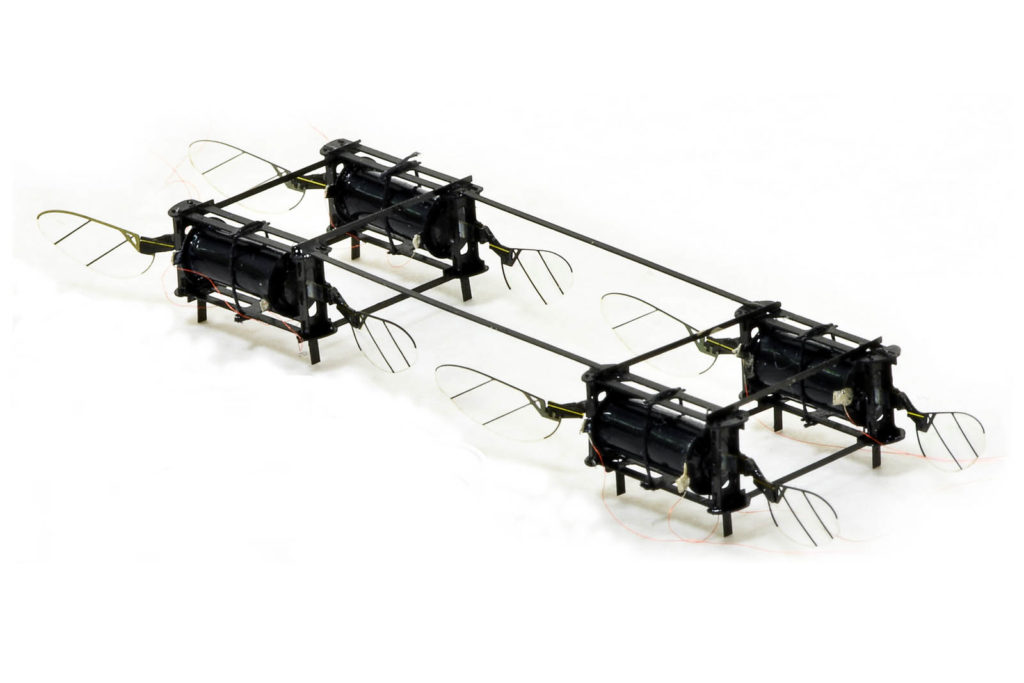Video: MIT.
If you’ve ever swatted a mosquito away from your face, only to have it return, you know that insects can be remarkably acrobatic and resilient in flight. Those traits help them navigate the aerial world, with its wind gusts and obstacles. MIT Assistant Professor Kevin Yufeng Chen has built a drone system that approaches the agility of these insects.
Chen, a member of the Dept. of Electrical Engineering and Computer Science and the Research Laboratory of Electronics, has developed insect-sized drones with unprecedented dexterity and resilience. The aerial robots are powered by a new class of soft actuator, which allows them to withstand the physical travails of real-world flight.
Typically, drones require wide open spaces because they’re neither nimble enough to navigate confined spaces, nor robust enough to withstand collisions in a crowd. “If we look at drones today, they’re usually quite big,” says Chen. “Most of their applications involve flying outdoors. The question is: Can you create insect-scale robots that can move around in very complex, cluttered spaces?”
According to Chen, “The challenge of building small aerial robots is immense.” These drones require a fundamentally different construction from large ones, which are usually powered by motors. But motors lose efficiency as you shrink them. So, Chen says, for insect-like robots “you need to look for alternatives.”

The principal alternative until now has been employing a small, rigid actuator built from piezoelectric ceramic materials. While piezoelectric ceramics allowed the first generation of tiny robots to take flight, they’re quite fragile. And that’s a problem when you’re building a robot to mimic an insect; foraging bumblebees endure a collision about once every second, for example.
Chen designed a more resilient tiny drone using soft actuators made of thin rubber cylinders coated in carbon nanotubes. When voltage is applied to the carbon nanotubes, they produce an electrostatic force that squeezes and elongates the rubber cylinder. Repeated elongation and contraction causes the drone’s wings to beat nearly 500 times per second, giving the drone insect-like resilience.
“You can hit it when it’s flying, and it can recover,” says Chen. “It can also do aggressive maneuvers like somersaults in the air.” Weighing in at just 0.6 grams, approximately the mass of a large bumble bee, the drone looks a bit like a tiny cassette tape with wings, though Chen is working on a new prototype shaped like a dragonfly.
Chen says the mini-drones could navigate complex machinery to ensure safety and functionality, artificially pollinate crop or perform search-and-rescue missions following a disaster. “All those things can be very challenging for existing large-scale robots,” says Chen.
Chen’s work appears this month in the journal IEEE Transactions on Robotics. His co-authors include MIT PhD student Zhijian Ren, Harvard University PhD student Siyi Xu, and City University of Hong Kong roboticist Pakpong Chirarattananon.
 TEXTILES.ORG
TEXTILES.ORG


